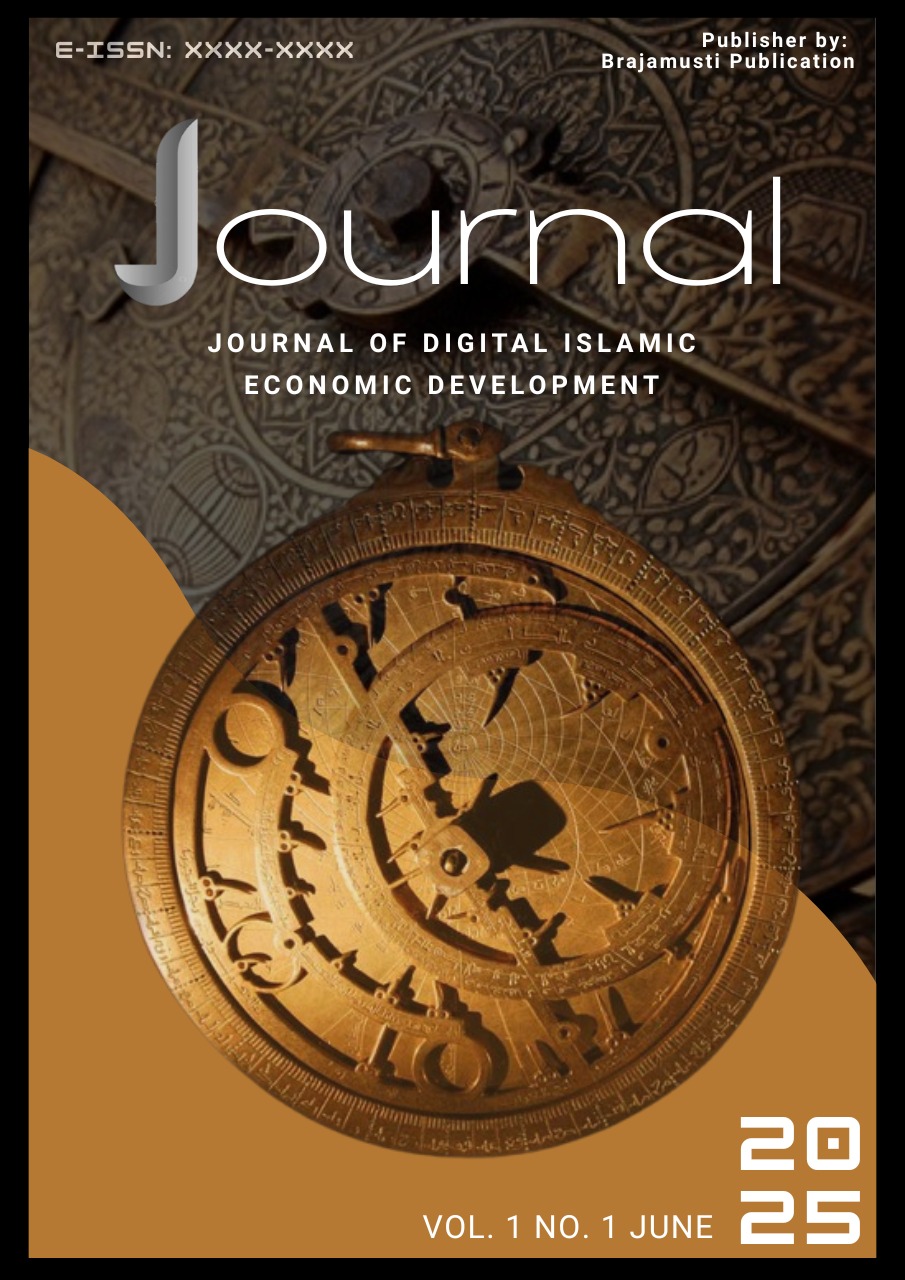Digital Transformation and Sukuk Development in the Islamic Financial Market: Challenges and Opportunities
DOI:
https://doi.org/10.70992/7190t925Keywords:
Sukuk, Islamic Capital Market, Digitalization, Sharia Regulation, Market Liquidity, Ijarah ContractAbstract
The sukuk market in Indonesia has experienced significant growth as part of the development of the global Islamic finance industry. However, its advancement still faces several challenges, including low market liquidity, regulatory disharmony, lack of transparency, and limited adoption of digital technologies. This study aims to analyze the development of corporate sukuk in Indonesia, identify key challenges that hinder the optimization of the sukuk market, and explore strengthening strategies through digital innovation and regulatory harmonization. This research employs a qualitative approach using literature review methods. Secondary data were collected from academic journals, financial market reports, government policies, and international case studies related to sukuk issuance. The analysis was conducted thematically to identify major patterns relevant to the dynamics of Indonesia's sukuk market. The findings indicate that corporate sukuk issuance in Indonesia has steadily increased over the years, with the ijarah contract dominating due to its asset-backed structure, which is preferred for its lower risk and clear cash flows. However, the sukuk market's development remains constrained by the lack of regulatory harmonization with international standards (such as AAOIFI and IFSB), low liquidity, insufficient transparency, and limited Islamic financial literacy. Digital integration, including the use of blockchain and smart contracts, is seen as a potential solution to enhance market efficiency, transparency, and inclusiveness. This study recommends four key pillars for strengthening Indonesia's sukuk market: regulatory harmonization, sukuk digitalization, enhancement of Islamic financial literacy, and the development of a technology-based secondary market.
References
Aktatusyaniah, N., & Hidayat, R. M. (2024). PENGARUH FINTECH SYARIAH TERHADAP PERKEMBANGAN INVESTASI DI PASAR MODAL SYARIAH (TINJAUAN TERHADAP REKSADANA SYARIAH). Jurnal Cahaya Mandalika ISSN 2721-4796 (Online), 5(3), 1170–1181.
Asri, N. H., & Wulandari, D. (2021). Macroeconomic variables and Sukuk outstanding in Indonesia. Open Access Indonesia Journal of Social Sciences, 4(6), 612–621.
Azzura, T., & Manik, M. R. E. S. (2025). Mengubah Tantangan Menjadi Peluang: Strategi Inovatif Untuk Memperkuat Pasar Modal Syariah Indonesia. Jurnal Ilmiah Bisnis Digital, 1(2), 77–83.
Delle Foglie, A., Panetta, I. C., Boukrami, E., & Vento, G. (2025). The impact of the Blockchain technology on the global Sukuk industry: smart contracts and asset tokenisation. Technology Analysis & Strategic Management, 37(4), 417–431.
Dimyati, D., Rosyadi, M. I., & Fageh, A. (2023). Smart Sukuk Berbasis Blockchain Tinjauan Maqasid Syariah Al-Najjar. Jurnal Ilmiah Ekonomi Islam, 9(3), 4144–4154.
Gunawan, D. (2025). Penerapan Smart Contract dalam Keuangan Syariah: Tinjauan Literatur tentang Integrasi Cryptocurrency dan Blockchain. Jurnal Ilmiah Ekonomi Islam, 11(1).
Hamza, O. (2020). Smart Sukuk structure from Sharia perspective and financing benefits: Proposed application of smart Sukuk through blockchain technology in Islamic banks within Turkey. European Journal of Islamic Finance.
Hanun, A. F., Aprilia, B. N., Pramudita, D. D., Anugrah, D., Pradana, D., & Fatikhah, I. N. (2025). STRATEGI PENGUATAN PASAR MODAL SYARIAH DI ERA EKONOMI DIGITAL. Journal of Economic Research and Business Management, 2(1), 81–100.
Ishak, N. S., & Musadik, S. H. S. A. (2024). Enhancing Co-Creation in Waqf. Digitalization of Islamic Finance, 335.
Kibria, M. K. (2024). Determinants of Sukuk Risk Premium. Hamad Bin Khalifa University (Qatar).
Kurniati, R. R., & Febrianti, A. (2024). Peluang Dan Tantangan Transformasi Digital Pada Bank Sayriah Indonesia (Bsi). Jurnal Bisnis Indonesia, 16(2).
Kusumawardhani, R. T. (2021). Potensi dan Tantangan Pembiayaan Infrastruktur Melalui Surat Berharga Syariah Negara. Buletin APBN, VI (2), 12â, 15.
Linda, S. A., Setiawan, I., & Nurjaman, M. I. (2023). Legal Consequences of Implementing Ijarah Contracts in Sukuk Issuance. Qawãnïn Journal of Economic Syaria Law, 7(1), 14–33.
Moleong, L. J. (2019). Metodologi Penelitian Kualitatif (Edisi Revisi. PT Remaja Rosdakarya.
Mu’azzin, M., Ariani, Z., Hidayanti, N. F., Hulaimi, A., Supriyadi, A., & Agustiana, A. (2025). Integration of Blockchain Technology in Islamic Finance A Literature Review on Transparency and Shariah Compliance. Proceeding of Islamic International Conference on Education, Communication, and Economics, 1, 839–845.
Nurhanifah, N. V. (2024). Understanding Sukuk Market Development: An Overview of Opportunities and Challenges. Journal of Waqf and Islamic Economic Philanthropy, 1(2), 1–11.
Pekerti, R. D., Hikmatyar, M., Rizal, D., & Nurzaman, I. (2024). Smart Sukuk on Blockchain Technology: A Systematic Literature Review. 8th Global Conference on Business, Management, and Entrepreneurship (GCBME 2023), 434–439.
Putri, M. Z., Wulandari, D., Aristawati, P. A., & Apridasari, E. (2025). Tantangan dan Peluang Pasar Modal Indonesia dalam Meningkatkan Minat Investasi di Era Digital. PENG: Jurnal Ekonomi Dan Manajemen, 2(2), 3546–3562.
Septiana, N. I., & Sanjayawati, H. (2021). Sukuk on Blockchain: Application, Advantages, and Challenges.
Sugiyono. (2019). Metode penelitian kualitatif, kuantitatif, dan R&D. Alfabeta.
Supyadillah, A., & Arif, Z. (2025). Diversity and Uniqueness of Sovereign Sukuk Issuance: Indonesian Experience. Journal of Ecohumanism, 4(2), 261–278.
Zed, M. (2004). Metode Penelitian Kepustakaan. Yayasan Obor Indonesia.



